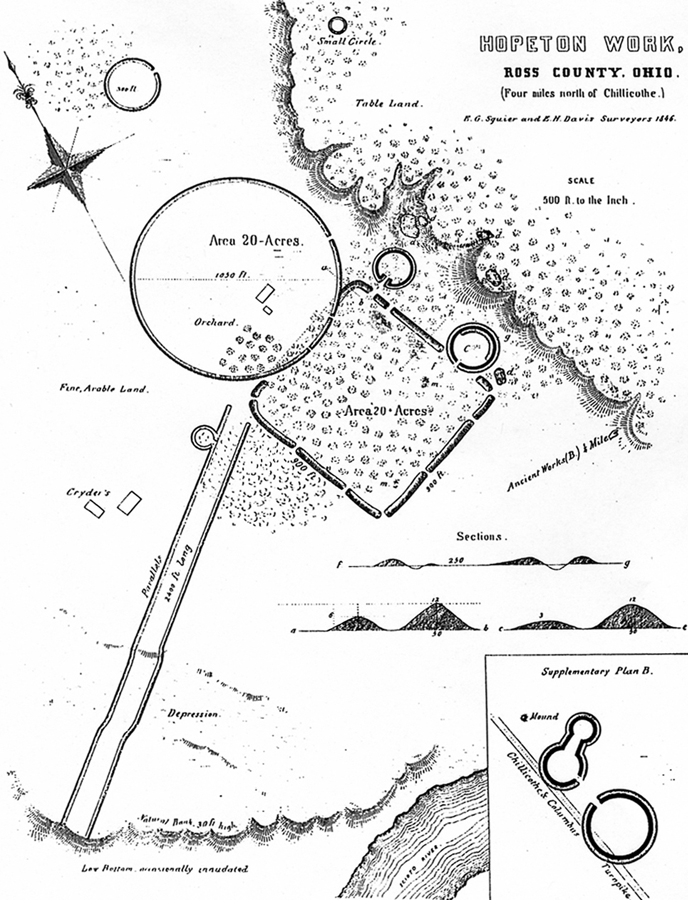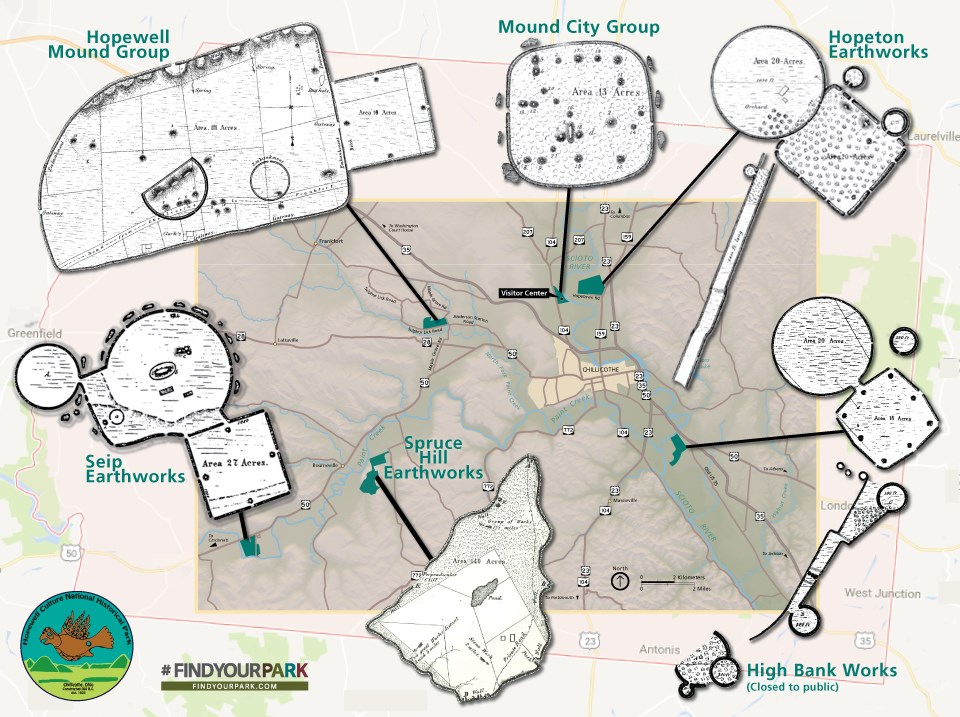Hopeton Earthworks
Hopeton Earthworks
Hopewell Culture National Historical Park 1444 Hopetown Road Chillicothe, Ohio 45601
Official WebsiteHopeton Earthworks map
Hopewell Culture National Historical Park Official Website
Hopewell Culture National Historical Park map
Also, see all the hotspots at:
Scioto River-Lower Important Bird Area
Ross County Birding Drive
About this Location
Although the Hopewell mounds and earthworks of Ross County have been well known to the scientific community for more than 150 years, many basic questions have yet to be answered about the sites, and about the people and culture who built them. The early archaeological research focused on mounds and mortuary behavior (e.g., Squier and Davis 1848; Thomas 1894; Mills 1922; Moorehead 1922) and yielded a great deal of information about the artistic and ritual aspects of Hopewell life.
Recent trends in Hopewell research have emphasized settlement pattern analysis and the relationships of the larger mound and earthwork sites to smaller villages and hamlets (Dancey and Pacheco 1997; Pacheco 1996). Comparisons among the large mound and earthwork sites have demonstrated some broad general similarities, but the structure and configuration of most sites are surprisingly diverse. The most thoughtful attempts to build broad explanatory models about the Hopewell world continue to be plagued by a lack of understanding about the chronology, structure, and function of individual earthwork sites. We believe this can be overcome with sustained, multi-year studies of individual earthwork sites.
The Midwest Archaeological Center has initiated a long-term study of the Hopeton Earthworks, beginning research in 1994 with a combination of geophysical surveys and strategic testing. Subsequent research was conducted in 1997 and 1998 (Lynott 2001). The 2001 and 2002 investigations, described here, are a continuation of that work. This work is intended to answer specific questions about the site and to develop a model to better interpret the nature and significance of the archaeological resources at this location
About Hopewell Culture National Historical Park
See all hotspots at Hopewell Culture National Historical Park
Earthen mounds and embankments forming huge geometric enclosures grace the landscape of the Ohio River Valley. These monumental structures were built by Native American hands almost 2,000 years ago. Hopewellian people gathered at these earthworks for feasts, funerals, and rites of passage. Come learn about these sacred spaces and reflect upon the lives of these American Indians.
Visible remnants of Hopewell culture are concentrated in the Scioto River valley near the present-day city of Chillicothe, Ohio. The most striking Hopewell sites contain earthworks in the form of circles, squares, and other geometric shapes. Many of these sites were built to a monumental scale, with earthen walls up to 12 feet high outlining geometric figures more than 1,000 feet across. Conical and loaf-shaped earthen mounds up to 30 feet high are often found in association with the geometric earthworks. Hopewell Culture National Historical Park preserves six earthwork complexes: High Bank Works, Hopeton Earthworks, Hopewell Mound Group, Mound City Group, Seip Earthworks and Spruce Hill Earthworks.
Restrooms at Mound City Visitor Center.
Features
Restrooms on site
Content from Hopewell Culture National Historical Park Official Website and Midwest Archaeological Center

